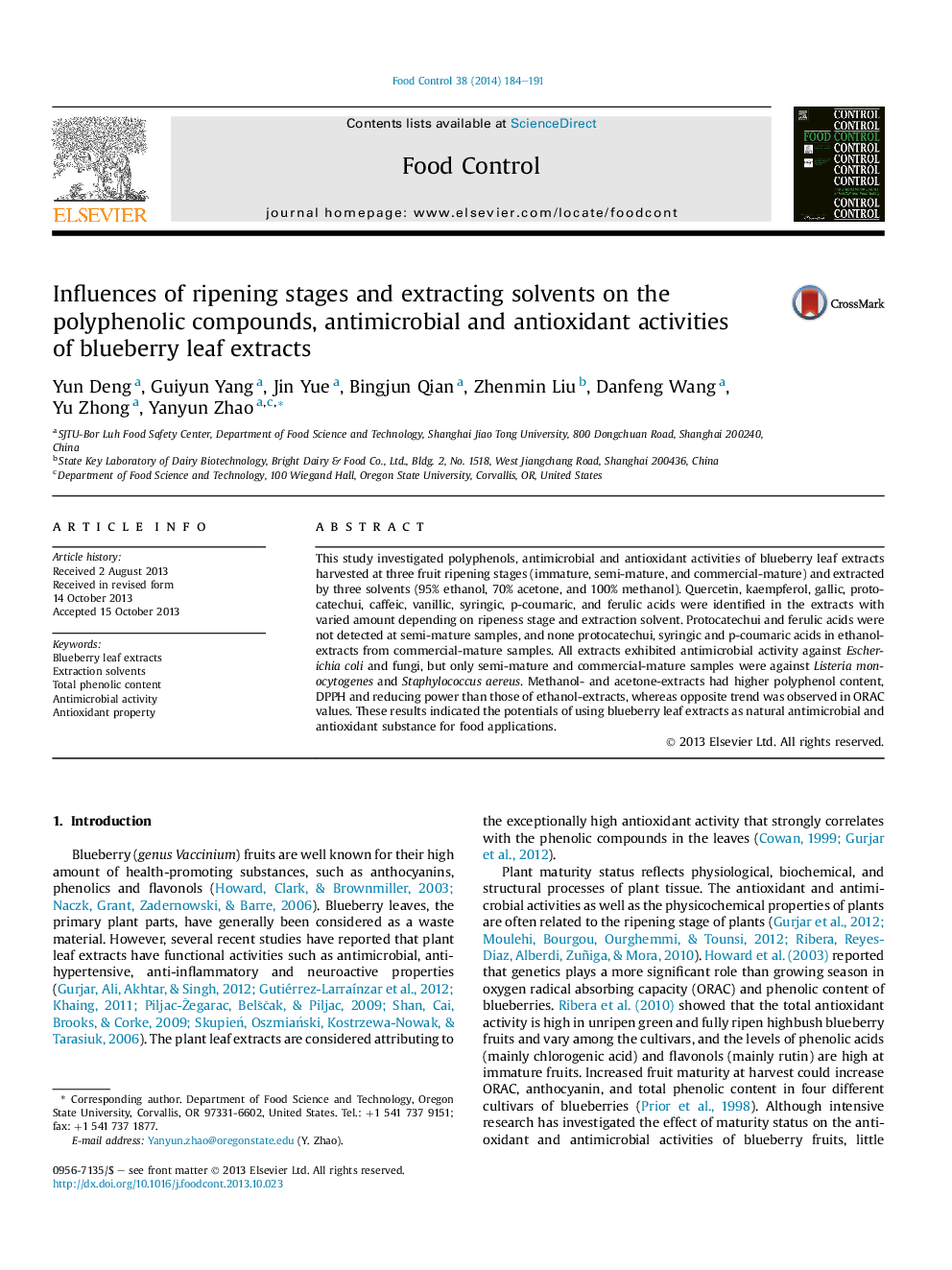| Article ID | Journal | Published Year | Pages | File Type |
|---|---|---|---|---|
| 6392069 | Food Control | 2014 | 8 Pages |
â¢Phenolics in blueberry leaf extracts varied with ripeness and extraction solvents.â¢Methanol- and acetone-extracts had higher phenolics, DPPH and reducing power.â¢All extracts showed antimicrobial activity against Escherichia coli and fungi.â¢Only semi-mature and commercial-mature samples against Listeria and Staphylococcus aereus.â¢Blueberry leaf extracts can be used as natural antimicrobials and antioxidants.
This study investigated polyphenols, antimicrobial and antioxidant activities of blueberry leaf extracts harvested at three fruit ripening stages (immature, semi-mature, and commercial-mature) and extracted by three solvents (95% ethanol, 70% acetone, and 100% methanol). Quercetin, kaempferol, gallic, protocatechui, caffeic, vanillic, syringic, p-coumaric, and ferulic acids were identified in the extracts with varied amount depending on ripeness stage and extraction solvent. Protocatechui and ferulic acids were not detected at semi-mature samples, and none protocatechui, syringic and p-coumaric acids in ethanol-extracts from commercial-mature samples. All extracts exhibited antimicrobial activity against Escherichia coli and fungi, but only semi-mature and commercial-mature samples were against Listeria monocytogenes and Staphylococcus aereus. Methanol- and acetone-extracts had higher polyphenol content, DPPH and reducing power than those of ethanol-extracts, whereas opposite trend was observed in ORAC values. These results indicated the potentials of using blueberry leaf extracts as natural antimicrobial and antioxidant substance for food applications.
